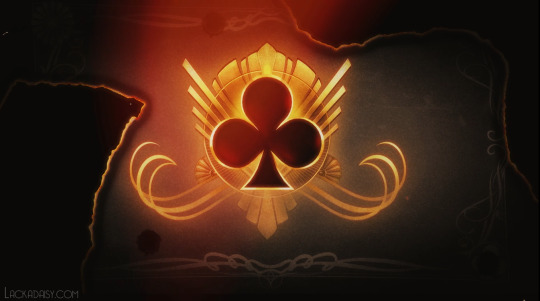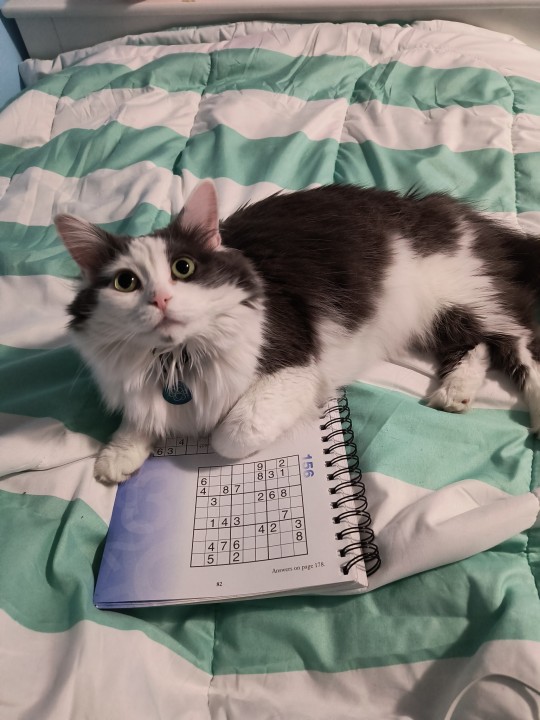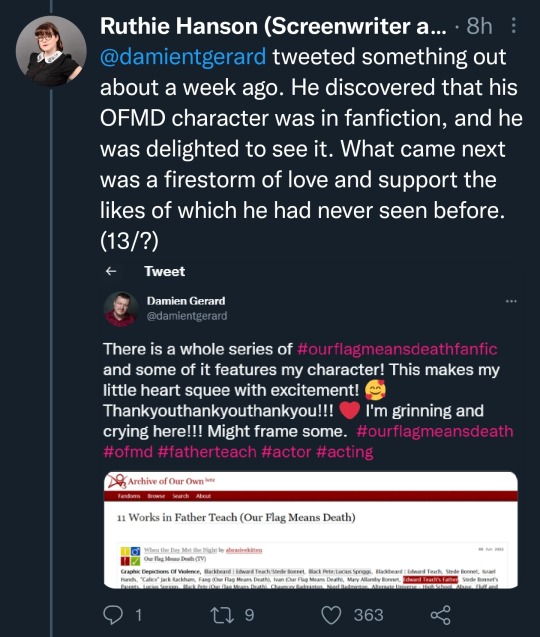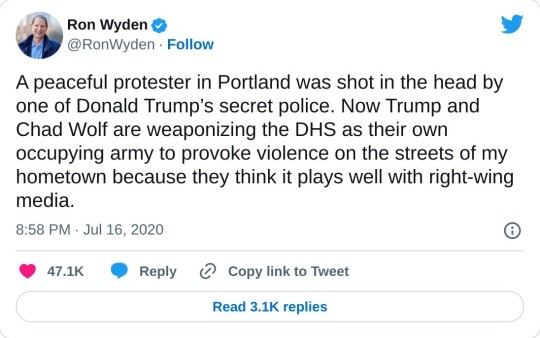#Gizmodo
Link
It’s an article!
....and a trailer!! ♣ ♣ ♣



#lackadaisy#lackadaisycats#animation#gizmodo#io9#2danimation#comic#webcomic#cats#indieanimation#1920s
5K notes
·
View notes
Text
AAAAAAAAAAAAAAAAAAAAAAAAAAAAAAAAAAAAAAAAAAAAAAAAAAAAAAAAAAAAAAAAAAAAAAAAAAAAAAAAAAAAAAAAAAAAAAAAAAAAAAAAAAAA
On October 10, AI researcher Will DePue posted "How to legally pirate every font on earth in an afternoon" on his blog. Two days later, he obliterated the contents of his blog and closed out his Twitter. Thus he disappeared from the internet. Why?
As mentioned here, Mastodon is having a "small problem" with abusive users. Calling them "pedants" is too polite. Ken "Popehat" White bailed out, and people screamed at him. Not only that.....One of the most extreme examples of a Mastodon server I've ever seen is octodon.social, run by this deeply troubled person. And you can't just dismiss it as a minor freakshow, because this excellent post is on the same server. Upshot: Mastodon is not much different from X-shitter, just less centralized.
A Guy In Town is a noted expert on laser machining. If you can skip over his rants about vaxxing, Agenda 2030 conspiracies, etc.
YouTube Shit: did I complain about Matt Field and his stupid channel yet? Idiots seem to love watching "survival" videos. No matter how fake.
What about Tiktok stupid? There's so much.....but this bitch and a whole traffic jam of fellow idiots got lost on desert roads because I-15 out of Vegas was backed up. "GPS is MAGIC!" There's also Madison. A pimply white girl who will never EVER date a white man. Apparently she was kicked off Facebook and X-shitter.
Darktable is an open-source application for archiving and batch processing of photographs in the RAW file format. Unfortunately, one of its developers hated it so much, he went off and created a "fork". And ranted about it on his blog. At length.
Nothing says "Gizmodo level of stupid" like "This Sea Creature Could Fight Cancer, Looks Like A Turd".
Yeh, blah blah, we know.

37 notes
·
View notes
Text



IM NOT CRYING YOU'RE CRYING
#solar opposites#tervo#interview#news#momentous occasion#literally......... canon#gizmodo#hulu#mike mcmahan#justin roiland#korvo#terry#TERVO IS FUCKING. CANON#solar opposites season 3 spoilers
557 notes
·
View notes
Text
Our Flag Means Death has just wrapped up its sophomore season, and it’s time to say goodbye to our favorite pirates for, well, at least another year. Streaming service MAX hasn’t renewed the workplace comedy/action-adventure show for a third season, but if the numbers are anything to go by, they would be foolish not to start talking about it.
David Jenkins, the writer/creator and sometime director of Our Flag Means Death, did a finale postmortem interview with io9, and we talk endings, piracy, and how comic actors and serious actors mesh. A quick warning, this interview is literally about the last episode of Our Flag Means Death, and contains spoilers. Proceed with caution.
So, here’s the thing; Jenkins and I have spoken a few times about Our Flag Means Death. He knows that I adore this show. He also knows that I adore Izzy Hands (Con O’Neill), the beleaguered first mate and jilted lover of the central couple of Blackbeard (Taika Waititi) and Stede Bonnet (Rhys Darby). He has also been keeping a secret from me for months: In this last episode of season 2, Izzy Hands dies.
“Are you mad at me?” Jenkins asked, almost plaintive as we said our ‘Hello’s under the auspices of the designated MAX PR person. “Oh, well. I’m not really mad at you, but I am disappointed,” I responded. “I think I’m sad at you.” This, he said, is worse.
At the end of the season, Izzy Hands dies in Blackbeard’s arms, giving Blackbeard permission not only to “be himself” but to leave piracy behind for good. It happened in the kind of cruelly random way that people often die in this genre of action/adventure stories. That didn’t make it any easier though. And at the end of the season, Blackbeard’s inability to save Izzy meant that there was simply no more reason for him to be a pirate anymore. Who was he doing it for? What more did he have to prove?
Regardless of the narrative reasons why Izzy Hands died, I was devastated. Did it make sense in the context of the show? Yes. Was it a deeply moving and incredibly well-acted moment? Also yes. Was his death made all the more affective because of how Izzy had been ingratiated, accepted, trusted, and even, at points, loved by his crew? Absolutely. So, of course I teared up a little.
Jenkins looked slightly sad himself, saying that “Ghosts exist in this world.” I told him not to make promises he couldn’t keep. At this point such a comment feels like it was made to make me, personally, feel better. I’m not sure Izzy could make a return at some point, nothing is certain about Our Flag Means Death’s future right now. It almost feels like Jenkins feels bad that he made me sad. I don’t know if he realizes how sad he’s going to make a lot of people.
This isn’t going to be an interview entirely about Izzy Hands, but he’s a big part of it—after all, his death is arguably one of the show’s biggest shocks yet. Looking back at Izzy’s arc over the two seasons, Jenkins said that he doesn’t see Izzy as a pure antagonist in season one because on some level… Izzy was right in his hesitations about Stede. “His boss is falling for this manic pixie dream girl, and he’s got to keep his boss safe because that’s his job,” Jenkins explains. “And then he has to get this ship to operate like a normal ship would operate. And they’re all weirdos. So he’s got the worst middle management position. And on top of that, his boss is a lunatic.”
Towards the end of season one, Izzy does have a turn away from ‘reasonably upset at Blackbeard’ to ‘serious antagonistic force’. But when he gets what he wanted–Blackbeard back to legendary form–it doesn’t really work out. “Be careful what you ask your God for, because you just might get it,” Jenkins warned. “Izzy gets it and it turns on him. That toxic relationship that he wished were all his, becomes all his… he’s crushed by it, and both he and Blackbeard both have to rebuild themselves.”
In Izzy’s case, the rebuilding is quite literal–his leg is amputated and replaced with a wooden prosthetic, carved from the unicorn figurehead of the Revenge. After this, he has to go through a transformation, Jenkins said he has to ask himself “What am I going to do with myself? You know, who am I going to be? After [the crew] makes him the Unicorn leg, I think he kind of sees like, ‘oh, this crew cares for me’. And I don’t think he’s ever felt cared for in that way.”
This season also saw a lot of Izzy interacting with Stede, often in more fun situations than the snipes back and forth in the first season. When asked about how Con O’Neill and Rhys Darby got along on set, Jenkins just laughed. “I really love building a show with really funny actors and then really serious actors. And the funny people are usually scared of the real serious people. And the real serious people are scared of the funny people. They terrify each other.”
For those that might not know, Darby is a stand up comedian and has been in many of Waititi’s darkly comic films. O’Neill, on the other hand, has been taking dramatic roles since his twenties, and has recently appeared in productions like The Batman and Chernobyl. “I think from the beginning people saw Con and were like, ‘Oh, man, I got to be like, really have to be in my game’,” Jenkins said, imitating Taika Waititi’s lilting Kiwi accent. “And then Con was like, ‘Oh, I don’t know what he’s doing, he saying I should just follow along with the improvisations’—” again, imitating O’Neill’s raspy drawl. “And then they’re both so good that by the end of the season they’re not scaring each other as much. But that admiration remains, and I think that was very much true between Rhys and Con.”
The decision to have Izzy die wasn’t one that Jenkins took lightly. “It was hard. It was hard to kill off Izzy. It was hard to tell Con that he was going to die. And he was so lovely about it. But, at the same time, he took it hard,” Jenkins said. “Like this thing we built together is going to die. It’s one thing to write it, it’s another thing to produce it, and to see Con carry that knowledge through the episodes, knowing what was going to happen to that character. Con took it really seriously.”
Jenkins also thinks that Izzy was able to say exactly what he needed to at the end of the show. “I think he gives his own eulogy. It’s about belonging to something. And that we do this for each other, you know? He came to view piracy as a thing we do for one another. And being on a crew is something you do for each other… he gets to a place where he eventually sees that it works because everybody is helping each other. Everybody cares for each other, and there needs to be some structure, but for him, it became less about dominance and more about belonging to something.”
The final shot of the season is actually Izzy’s grave, outside of Ed and Stede’s cottage. “I think him being buried near them is a lovely image,” he said. “And there’s a reason that that happened. I think they both were sad to see their friend go. And I think they’re both thinking, ‘let’s make this work not just for us, but in memory of Izzy’.”
One of the prevalent rumors about Our Flag Means Death this season was that it was originally supposed to be 10 episodes rather than 8. But Jenkins says no; it was always going to be 8. They were looking for ways to cut budget, and moving the production to New Zealand and cutting down the episodes really helped with the bottom line, as well as being better for the cast and crew. “It takes so much to make one episode happen. Every department is strung out by the time you get to the end of the season,” he explained.
“The story of Stede and Blackbeard is a three-season story,” Jenkins said, looking ahead to where the show could go from here. When asked if the ending of season two–Frenchie taking over as Captain of the Revenge, Stede and Ed in a shack on the beach, preparing to open their inn, and Izzy Hands buried in front of their home–was a kind of “safeguard” in case the series didn’t get that third season, Jenkins shrugged. “In a way,” he said. “The first season ends on such a downer, so it made sense to end the second season in a kinder spot.”
But he says that he “still has questions” about what happens next. The Republic of Pirates has been destroyed, Izzy’s killer is still out there, and does Frenchie have what it takes to captain a pirate crew? Our Flag Means Death is not a complete story yet. “I think there’s plenty of story left for season three, but I think that it was important to end this as if it was the end of the show, and on upbeat note and avoid the kind of “kill your gays” trope. I don’t want to see Steve and Ed punished for giving it a go. I want to see them really say, ‘yeah, we’re going to we’re going to try to have a relationship’.”
When asked how he would approach the third season , Jenkins thought about it for a few seconds before answering. “I would very much like to see pirates come to America. Historically, they were in New York City and the Carolinas. And now, in the story, the Republic of Pirates is gone… I think that stories about piracy are a little bit like stories about the West. They’re stories about these things that are going to end inevitably,” he said this sadly, like the inevitability comes from looking back on the past and thinking the present couldn’t come out any other way. It’s a bit of a eulogy. “In some ways, I think then seeing them have to deal with some of these things in a country that’s coming together would be good. And I think it would be a good way to end the season, and see how they adjust to it.”
The final scene with Izzy and Blackbeard is incredibly, desperately sad, and clearly required a lot from both O’Neill and Waititi in the moment. “When Izzy died, I said, ‘Would you like to play music on set?’” Jenkins recalled. “ He went ‘Yeah’. And so I made an Izzy Death playlist and put it on during the takes.”
This is the second time I have been teased with an Our Flag Means Death playlist. The first time was from music supervisor Maggie Phillips after the first season had ended. I had to ask for this playlist, but Jenkins didn’t want to share. He mentioned Carole King, implying that “Bitter with the Sweet” was played. I was not doing well with this information, especially after I put my face in my hands. He tried, once again, to console me but I was lost in my Izzy Hands feelings. Maybe taking the good with the bad was personal advice. Or, more honestly, I just think he felt a little sad too.
#our flag means death season 2#ofmd s2#ofmd s2 spoilers#spoiler#our flag means death#ofmd#david jenkins#intérview#gizmodo
34 notes
·
View notes
Text

Yes yes. Thank you Gizmodo. (Best TV moments 2022)
#iwtv#interview with the vampire#amc's iwtv#amc's interview with the vampire#sam reid#jacob anderson#assad zaman#gizmodo#article#best tv moments 2022#eric bogosian#iwtv cast#the cast outdoing itself
151 notes
·
View notes
Text
An interesting article I stumbled across discussing the different reaction fans had to Izzy's fate in s2.
What I find interesting is that the article itself discusses the fan reactions from all sides with equal seriousness and compassion. It even mentions how this sort of fan reaction would not have been news-worthy a few years ago, but fandom landscapes are changing. Anyway, a good read for those who love OFMD or are just interested in fandom culture at large.
Of course, warning for spoilers for season 2!
#ofmd#our flag means death#spoilers#ofmd spoilers#izzy hands#article#gizmodo#fandom#ofmd s2#our flag means death s2
34 notes
·
View notes
Text

67 notes
·
View notes
Text
Tumblr I've been gatekeeping this picture of Gizmo and I'm so sorry

13 notes
·
View notes
Text
Ahsoka's Credits Music Is the Most Interesting Thing About It
Ever since Ahsoka Tano stepped out of the mists of Corvus and into live-action Star Wars history on The Mandalorian, I’ve had complicated feelings about the direction of one of my favorite Star Wars characters in contemporary canon. Those feelings haven’t changed much in the opening episodes of her new titular series so far—but watching them this past week I found one thing giving me a tiny…

View On WordPress
#Ahsoka#Ahsoka Tano#Boba Fett#Culture#Darth Vader#Entertainment#Fictional cyborgs#Gizmodo#Grand Admiral Thrawn#Grogu#Hera#Internet memes#Jedi#Kevin Kiner#Luke Skywalker#Mandalorians#Palpatine#Rosario Dawson#Sabine Wren#Star Wars: The Clone Wars#Thrawn
11 notes
·
View notes
Link
“Oh yeah, There are so many songs I listen to for each spot. For this show, I probably have a playlist of about 300 songs.” I literally gasped. I wanted to hear them all, immediately. “I was so inspired by this show, and we could only put in very few. Every spot you hear in the show I probably went through 100 songs to get to that spot. I watch every scene at least 100 times, testing different songs. The moment at the end of the pilot in Our Flag Means Death? I’ve probably watched 50 to 100 times, just to get it perfect.”
#ofmd#our flag means death#Maggie Phillips#our flag means death soundtrack#our flag means death music#gizmodo#linda codega#NEW INTERVIEW!#my posts
204 notes
·
View notes
Text

Hey y'all!! Any BIPOC Star Wars fans should definitely check this out and get in touch w these guys!! Sharing here since ik not everyone is on Twitter and io9 DEFINITELY isn't on here.
129 notes
·
View notes
Text
"The final steps of the Crunchyroll and Funimation merger are in motion. This merger seems to be going the way of many other mergers, with fewer options for consumers and higher prices. Last month, another tech merger, Microsoft and Activision Blizzard, resulted in the company laying off 1,900 employees right as the company reached a $3 trillion valuation. Tech mergers often have significant upside for corporations, with little benefit to fans and employees. Now, anime fans will have to shoulder the consequences."
3 notes
·
View notes
Text
Short video of Rebecca Hall talking about working with Dan Stevens on Godzilla x Kong: The New Empire.
#godzilla x kong: the new empire#godzilla x kong#monsterverse#dan stevens#rebecca hall#gizmodo#interview
2 notes
·
View notes
Text
I consume every new piece of content coming out of the OFMD universe like a lone wanderer in the desert who just found water for the first time in 3 days because like,,,,, the cast & crew are just SO WHOLESOME?! and lovely?? and cute????? And so so positive about the fandom it's actually surreal?!?!?!
Today for me it's the Gizmodo article on David Jenkins, this section in particular (but there's so many other amazing tidbits, highly recommend reading it):

This absolutely heartwarming thread by an author & screenwriter about how OFMD allowed them to embrace the fanfic they've written, which included this cute shoutout for Father Teach's actor:

This adorable clip of Vico teaching Rhys how to properly say Puerto Rico (video from here!!):
Taika telling Vanity Fair he has a collection of Ed/Stede fanart (sometimes raunchy) on his phone I'm—

Samba opening for Rhys' stand-up show and of course there was much OFMD love to be had there:

JUST they're all too good!!! I love them all!!!!
#ofmd#our flag means death#ofmd cast#david jenkins#taika waititi#rhys darby#samba schutte#vico ortiz#damien gerard#vanity fair#gizmodo
108 notes
·
View notes
Text
The Department of Homeland Security launched a failed operation that ensnared hundreds, if not thousands, of U.S. protesters in what new documents show was as a sweeping, power-hungry effort before the 2020 election to bolster President Donald Trump’s spurious claims about a “terrorist organization” he accused his Democratic rivals of supporting.
An internal investigative report, made public this month by Sen. Ron Wyden, a Democrat of Oregon, details the findings of DHS lawyers concerning a previously undisclosed effort by Trump’s acting-Secretary of Homeland Security, Chad Wolf, to amass secret dossiers on Americans in Portland attending anti-racism protests in summer 2020 sparked by the police murder of Minneapolis father George Floyd.
The report describes attempts by top officials to link protesters to an imaginary terrorist plot in an apparent effort to boost Trump’s reelection odds, raising concerns now about the ability of a sitting president to co-opt billions of dollars’ worth of domestic intelligence assets for their own political gain. DHS analysts recounted orders to generate evidence of financial ties between protesters in custody; an effort that, had they not failed, would have seemingly served to legitimize President Trump’s false claims about “Antifa,” an “organization” that even his most loyal intelligence officers failed to drum up proof ever existed.
“DID NOT FIND ANY EVIDENCE THAT ASSERTION WAS TRUE”
The DHS report offers a full accounting of the intelligence activities happening behind the scenes of officers’ protest containment; “twisted efforts,” Wyden said, of Trump administration officials promoting “baseless conspiracy theories” to manufacture of a domestic terrorist threat for the president’s “political gain.” The report describes the dossiers generated by DHS as having detailed the past whereabouts and the “friends and followers of the subjects, as well as their interests” — up to and including “First Amendment speech activity.” Intelligence analysts had internally raised concerns about the decision to accuse anyone caught in the streets by default of being an “anarchist extremist” specifically because “sufficient facts” were never found “to support such a characterization.”
One field operations analyst told interviewers that the charts were hastily “thrown together,” adding they “didn’t even know why some of the people were arrested.” In some cases, it was unclear whether the arrests were made by police or by one of the several federal agencies on the ground. The analysts were never provided arrest affidavits or paperwork, a witness told investigators, adding that they “just worked off the assumption that everyone on the list was arrested.” Lawyers who reviewed 43 of the dossiers found it “concerning,” the report says, that 13 of them stemmed from “nonviolent crimes.” These included trespassing, though it was unclear to analysts and investigators whether the cases had “any relationship to federal property,” the report says.
A footnote in the report states that “at least one witness” told investigators that dossiers had been requested on people who were “not arrested” but merely accused of threats. Another, citing emails exchanged between top intelligence officials, states dossiers were created “on persons arrested having nothing to do with homeland security or threats to officers.”
Questioned by investigators, the agency’s chief intelligence officer acknowledged fielding requests by Wolf and his acting deputy, Ken Cuccinelli, to create dossiers “against everyone participating in the Portland protest,” regardless of whether they’d been accused of any crime, the report says. That officer, Brian Murphy, then head of the agency’s Office of Intelligence and Analysis (I&A), told interviewers that he’d rejected the idea, informing his bosses that he could only “look at people who were arrested,” and adding that it was something his office had done “thousands” of times before.
The DHS report, finalized more than a year ago, includes descriptions of orders handed down to “senior leadership” instructing them to broadly apply the label “violent antifa anarchists inspired” to Portland protesters unless they had intel showing “something different.”
Once the dossiers were received by the agency’s emerging threat center, it became clear that DHS had no real way to tie the protesters to any terrorist activities, neither at home nor abroad. Efforts to drum up evidence to support the administration’s claim that a “larger network was directing or financing” the protesters — a task assigned to another unit, known as the Homeland Identities, Targeting and Exploitation Center, diverted away from its usual work of analyzing national security threats — “did not find any evidence that assertion was true,” the report says.
A TRUMPED-UP THREAT, A TRUMPED-UP HOMELAND SECURITY DEPARTMENT
Fears of political toadies occupying key intelligence roles had been aired publicly by former intelligence community members during the Trump administration’s early years, but their concerns were all but ignored by Senate Republicans during confirmation hearings that would ultimately inflict serious reputational damage on a number of agencies that, for their own survival, had long avoided partisan leanings.
The report is based on interviews with approximately 80 employees conducted by attorneys drawn from various agency components, including U.S. Customs and Border Protection and the U.S. Coast Guard. The investigation began in response to leaks of internal DHS emails in July 2020 that prompted questions from lawmakers about potential intelligence abuses, including the monitoring of journalists’ activities online and the liberal application of terrorism-related language to describe Americans engaged in protest.
I&A is one of the nation’s 17 intelligence community members overseen by the nation’s “top spy,” the Director of National Intelligence, whose office drafts daily top-secret briefings for the President. The directorship was held throughout the protests by John Ratcliffe, a Republican of Texas and renowned Trump loyalist, whose nomination to the post was withdrawn initially in 2019 over qualifications concerns raised by lawmakers and career intelligence officials.
The dossiers, known as Operational Background Reports, or OBRs, are known colloquially within the agency as “baseball cards,” the report says. The task of creating them was handed, “with little to no guidance on execution,” to the agency’s Current and Emerging Threats Center, an analysis unit whose “actionable intelligence” is distributed widely throughout the government. According to the report, the dossiers would’ve been shared with, among others, the agency’s Field Operations Division, which works closely with House and Senate committee staffers, and the Federal Protection Service, whose core mission is securing some 9,000 federal facilities across the country. The extent to which entities outside the federal government were meant to be involved is unclear; however, the report indicates that DHS state and local partners, which would naturally include law enforcement, but also potentially organizations like National Governors Association, could have also been in the loop.
Funded to the tune of $1.5 billion, the Federal Protective Service (FPS) is comprised of thousands of security officers drawn from private contractors such as Triple Canopy, a firm merged in 2014 with another contractor called Academi, previously known as Blackwater. Its staff notoriously included elite warfighters recruited from among the Navy SEALS, the Army Rangers, and the Marines expeditionary force MARSOC.
Activated to engage protesters targeting federal buildings in Portland — including the well-vandalized Hatfield Federal Courthouse — FPS personnel were eventually joined by officers hailing from across the federal government, including some on loan by the U.S. Marshals Service tactical unit normally tasked with making the arrests of the nation’s most violent fugitives. They converged for a mission dubbed “Operation Diligent Valor,” authorized under Executive Order 13933, purportedly to apprehend “anarchists and left-wing extremists” who’d been driven by Floyd’s murder to target U.S. monuments commemorating slave owners and Confederate traitors — dangerous individuals, Trump said, advancing a “fringe ideology” painting the U.S. government as “fundamentally unjust.”
Floyd’s death at the hands of Minneapolis police officer Derek Chauvin, convicted of murder and sentenced to 22 and a half years in prison in 2021, sparked more than 100 days of continuous marches in Portland. Sporadic protests continued well into the next spring, frequently marked by nightly standoffs between protesters toting bottles, fruit, and fireworks and riot-control squads armed with nightsticks, pepperspray, and “kinetic impact munitions” designed to irritate, disorient, and compel compliance through pain.
Police would eventually rack up an unprecedented 6,000 documented use-of-force cases against the demonstrators, who in turn reportedly inflicted more than $2.3 million in damage to federal buildings alone. Police ran off legal observers and physically beat journalist who suffered injuries at the hands of federal agents armed with crowd control weapons as well. In response to the bad press, Justice Department lawyers filed a successful motion in court giving police the power to force reporters off the streets.
Reports began surfacing, meanwhile, of protesters being abducted near demonstrations by men jumping out of unmarked vans in military fatigues. After widely circulated footage confirmed the accounts, DHS acknowledged the abductions, as well as the fact that agents had taken intentional steps to ensure their identities remained secret.

Analysts would feed protesters’ names into an array of databases, including LexisNexis, a tool used by Immigration and Customs Enforcement agents to hunt undocumented immigrants. Another tool, referred to as “Tangles” — a likely reference to the now-defunct Facebook app CrowdTangle — was used to “[compile] information from the subject’s available social media profiles.”
The report also states that dossiers were requested on multiple journalists, including Benjamin Wittes, editor-in-chief of Lawfare.
Wittes was targeted for publishing unclassified DHS materials, including the initial leak that set off the investigation. Wittes had coauthored an article at Lawfare with Steve Vladeck, a University of Texas law professor, in July 2020, which included leaked guidance — known as a “job aid” — disclosing DHS plans to act on Trump’s executive order. The document, Lawfare reported, implicated “at least parts of the intelligence community” in the “monitoring and collecting information on some protest activities.” Later leaks obtained by the New York Times included a DHS memo that, among other things, summarized tweets that had been published by Wittes.
One tweet, published on July 26 — a week after Lawfare published the guidance document — included a leaked email by DHS’s acting-Chief Intelligence Officer, relaying orders to begin referring to all violence in Portland as the work of “Antifa.”

As the summer nights grew longer and the 2020 elections near, the media spent less time focused on the cause of the demonstrations — the suffocation of a Black father of five by a white Minneapolis police officer who was outwardly unmoved by Floyd’s desperate pleas for air, or the heartrending cries for his mother. Headlines shifted instead, as if on cue, to focus on the narrative crafted by the president’s flailing reelection campaign; a pre-packed delusion designed to strike fear in voters’ imaginations and tether Democrats to a fictitious terrorist threat.
Nothing could dissuade Trump from continuing to propagate the claims, which his supporters — most to this day — continue to blindly believe. “In my book it’s virtually a part of their campaign, Antifa,” Trump said in the final months before the election. “The Democrats act like, gee, I don’t know exactly what that is.”
Trump’s highest ranking intelligence crony, John Ratcliffe, meanwhile, would go on to play the only card left with a little help from Sen. Lindsey Graham, the Republican chairman of the Senate Judiciary Committee.
Shocking and alarming career intelligence officials, Graham posted a letter online ahead of the election’s final debate. It contained a batch of Russian disinformation that a Republican-led committee had disregarded as bogus four years earlier. Apparently, it focused on the only Democrat left on whom they could find any material with which to smear: Hillary Clinton, who had no election to lose.
#us politics#news#gizmodo#donald trump#trump administration#department of homeland security#domestic terrorism#antifa#portland protests#2020 protests#2020#2022#2020 election#Sen. Ron Wyden#Chad Wolf#george floyd protests#Ken Cuccinelli#Homeland Identities Targeting and Exploitation Center#us coast guard#us customs and border protection#John Ratcliffe#Federal Protection Service#Triple Canopy#blackwater#us marshals service#Executive Order 13933#immigration and customs enforcement#Benjamin Wittes#lawfare
20 notes
·
View notes
Text
Another one, this time for Eric (or Daniel) 😈
That character that got us through 2022

link
🙌
that even when surrounded by a bunch of immortal, absurdly hot twinks, the mean old man is the one I want to see more of
#interview with the vampire#iwtv#eric bogosian#daniel molloy#gizmodo#article#nice#also#absurdly hot twinks is about right lol
165 notes
·
View notes